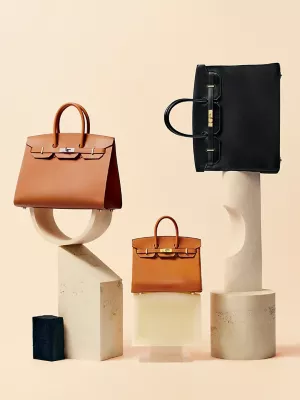The Birkin bag, introduced in 1984 by French luxury brand Hermès, is known for its high price and exclusivity. Handmade from premium leather, the bag is named after English-French actress and singer Jane Birkin, who famously inspired its creation after a chance encounter with Hermès CEO Jean-Louis Dumas. Over time, the Birkin has become a symbol of wealth, sophistication, and status, coveted by celebrities, influencers, and fashion enthusiasts alike.
Birkin bags are often seen as “Veblen goods,” where higher prices increase their desirability. The bags are distributed unpredictably and in limited quantities, creating an aura of artificial scarcity. This exclusivity drives demand, leading to long waiting lists for the bag, further reinforcing its luxury status. The meticulous craftsmanship and attention to detail required to make each Birkin—often taking up to 18 hours of work by skilled artisans—also contribute to its premium price.
The retail price of a Birkin bag starts at around $10,000 and can soar to over $500,000 depending on the type of leather, whether exotic skins (such as crocodile, ostrich, or alligator) are used, and the presence of precious metals or jewels. For instance, bags adorned with diamonds or 18k gold can fetch astronomical prices. Their rarity and high resale value on second-hand markets only add to their appeal, making them one of the most coveted luxury items in the world. Birkins are often resold for more than their original price, further solidifying their status as an investment piece.
Beyond just being a fashion accessory, Birkin bags are considered a status symbol, embodying the highest level of luxury. The brand’s consistent demand and market exclusivity have cemented the Birkin’s place in both the fashion world and the world of high-end collectibles.
Think about, can you transform your product by just changing the marketing strategy.

